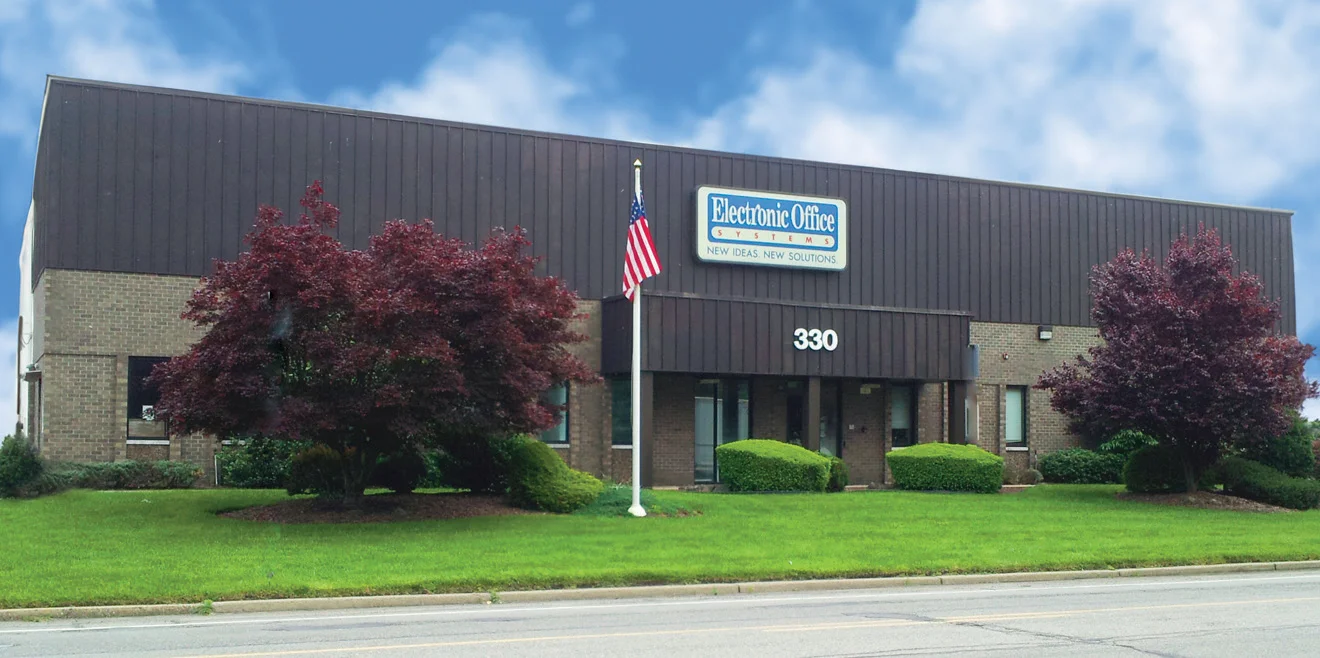In this digital age, faxing is still a vital part of many businesses’ day-to-day operations. Faxing allows for the secure transmission of confidential documents, often containing sensitive and critical information. Although the technology behind faxing has been around for several decades, it is still a widely used form of communication due to its speed and reliability. One of the most important factors in determining how quickly a fax is sent or received is the transmission speed. In this article, we will explore how transmission speed affects the time it takes to send or receive a fax.
The transmission speed of a fax is determined by the number of bits sent per second (bps). The higher the number of bits per second sent, the faster the transmission speed. A higher transmission speed means that more data can be sent in a shorter amount of time, resulting in a faster transmission. Conversely, a lower transmission speed will take longer to send and receive faxes. It is important to note that transmission speed also depends on the type of fax machine used and the distance between the two fax machines.
Another factor that affects the time it takes to send or receive a fax is the size of the document. The larger the document, the longer it will take to send or receive. A larger document will require more data to be transmitted, so the transmission speed will be slower. Additionally, the quality of the document can also affect the time it takes for the fax to be sent or received. Documents with higher resolutions will take longer to send and receive than documents with lower resolutions.
In conclusion, it is clear that transmission speed plays a major role in determining how quickly a fax is sent or received. The higher the transmission speed, the faster the fax will be transmitted. However, other factors such as document size and quality can also affect the time it takes to send or receive a fax. By considering all of these factors, you can ensure that your faxes are sent and received as quickly as possible.
Impact of Transmission Speed on Fax Time
The transmission speed of a fax plays an important role in determining the time it takes to send and receive a fax. As the speed of transmission increases, the time required to send or receive a fax decreases. Generally, faster transmission speeds occur with digital faxing, as compared to traditional fax machines. Digital faxing utilizes internet connections, such as cable modems, DSL, or T1 lines, to send and receive documents. This type of connection is much faster than the traditional fax machines that use analog telephone lines for transmission.
The transmission speed of a fax is also affected by the size of the document being sent or received. Large documents with multiple pages will take a longer time to transmit than smaller documents with fewer pages. Additionally, if the fax is being sent to multiple recipients, the process may take even longer, as the document is sent to each recipient one at a time.
Advancements in fax technology have significantly improved the speed of transmission. Many fax machines now come with built-in memory, allowing documents to be stored and sent at a faster rate. Also, there are now services that offer digital faxing without the need for a fax machine. These services allow documents to be sent and received almost instantaneously, as they are sent over the internet.
Finally, the comparison between traditional fax and internet fax transmission speed and time efficiency can be made. While traditional fax machines may offer a slightly faster transmission speed, the time taken to send and receive a fax is still significantly slower than digital faxing. With digital faxing, documents can be sent and received almost instantaneously, making it much more time efficient than traditional fax machines.
Factors Influencing Transmission Speed
Transmission speed is one of the most important factors in determining the time it takes for a fax to be sent or received. Generally, transmission speed is determined by the type of technology used and its corresponding features. Traditional fax machines typically have a slower transmission speed than digital fax machines, which in turn are slower than internet fax machines. The transmission speed of a fax can also be affected by external factors such as internet connection speed, phone line quality, and distance between the sender and receiver.
The transmission speed of a fax affects the time it takes to send or receive a fax in a direct manner. Faster transmission speeds result in shorter transmission times, while slower transmission speeds result in longer transmission times. The size of the file being sent can also influence the transmission time, as larger files typically require more time to send or receive than smaller files. Additionally, internet fax machines are usually able to send or receive multiple files simultaneously, resulting in even faster transmission times.
Advancements in fax technology have significantly increased the transmission speed of fax machines in recent years. Digital fax machines are able to send and receive faxes much faster than traditional fax machines, while internet fax machines provide even faster transmission speeds. This has enabled businesses to send and receive large files more quickly, resulting in increased efficiency and productivity. Additionally, internet fax machines are able to send and receive faxes over the internet, eliminating the need for traditional phone lines and allowing for faster transmission times.
Relationship between File Size and Digital Fax Transmission Times
The relationship between file size and digital fax transmission times is a significant factor when considering how long it will take to send or receive a fax. File size affects transmission speed, as larger files require more bandwidth to be sent across the network. The amount of time it takes to send a fax is dependent on how large the file is, as larger files take longer to transfer. Additionally, the transmission speed of the fax connection can also impact the time it takes to send a fax. Slower transmission speeds will take longer for the file to be sent and received.
The transmission speed of the fax connection is typically measured in bits per second (bps). Higher transmission speeds allow files to be sent and received faster than slower transmission speeds. A slow transmission speed such as 14.4 kbps will take longer to send a fax because it is limited in how much data it can transfer per second. In comparison, a high speed transmission such as 33.6 kbps or 56 kbps will require less time for a fax to be sent due to its ability to transfer more data per second.
In conclusion, the relationship between file size and digital fax transmission times is a critical factor to consider when determining how long it will take to send or receive a fax. Larger files require more bandwidth to be sent across the network, meaning they take longer to transfer. Additionally, the transmission speed of the fax connection can also play a role in the time it takes to send a fax. Faster transmission rates can send and receive files quicker than slower transmission rates.
Advancements in Fax Technology and Transmission Speeds
Fax technology has seen many advancements over the years, with the largest impact being on transmission speeds. This has led to a major increase in the efficiency of sending and receiving faxes, allowing for quicker communication. With the introduction of digital faxing, these speeds have only increased. Digital faxing has made sending and receiving faxes much faster than with traditional analog faxing. The transmission speed of a fax is determined by the type of technology used, the speed of the fax machine, and the type of data being sent. By using faster machines and higher speed data networks, the time it takes to send or receive a fax has been greatly reduced.
The transmission speed of a fax affects the time it takes to send or receive a fax in a few ways. First, the faster the transmission speed, the less time it takes for the data to be transmitted from one device to another. Second, faster speeds allow for larger files to be sent without the need for multiple transmissions. Third, faster speeds mean that fewer retransmissions are necessary if an error occurs during a transmission. Finally, faster speeds mean that the overall time it takes to send or receive a fax is reduced, allowing for quicker communication.
In conclusion, the transmission speed of a fax has a major impact on the time it takes to send or receive a fax. With the introduction of digital faxing, fax transmission speeds have increased significantly, leading to faster communication. Faster speeds also allow for larger files to be sent or received, meaning fewer retransmissions are necessary. Overall, advancements in fax technology and transmission speeds have greatly improved the efficiency of sending and receiving faxes.

Comparison of Traditional Fax vs Internet Fax: Transmission Speed and Time Efficiency
The transmission speed has a significant impact on the time it takes to send or receive a fax. Generally, the higher the transmission speed, the faster the fax will be sent or received. Traditional fax machines typically have a transmission speed of 14.4 kbps, which is significantly slower than the transmission speed of modern internet fax machines, which typically have transmission speeds of around 33.6 kbps and higher. This means that sending or receiving a fax with an internet fax machine is much quicker than with a traditional fax machine.
In addition to transmission speed, the size of the file being sent or received also affects the time it takes to send or receive a fax. If the file is larger, it will take longer to transmit the fax, regardless of the transmission speed. However, the transmission speed does play a role in how quickly the fax can be sent or received, as a faster transmission speed allows the file to be transferred more quickly.
Advances in technology have enabled internet fax machines to have higher transmission speeds than traditional fax machines, which has significantly improved the speed and efficiency of sending and receiving faxes. This is especially true for large or complex files, which can take significantly longer to transmit with a traditional fax machine. By utilizing an internet fax machine, businesses and individuals can send or receive faxes much more quickly and efficiently, saving them time and money.

